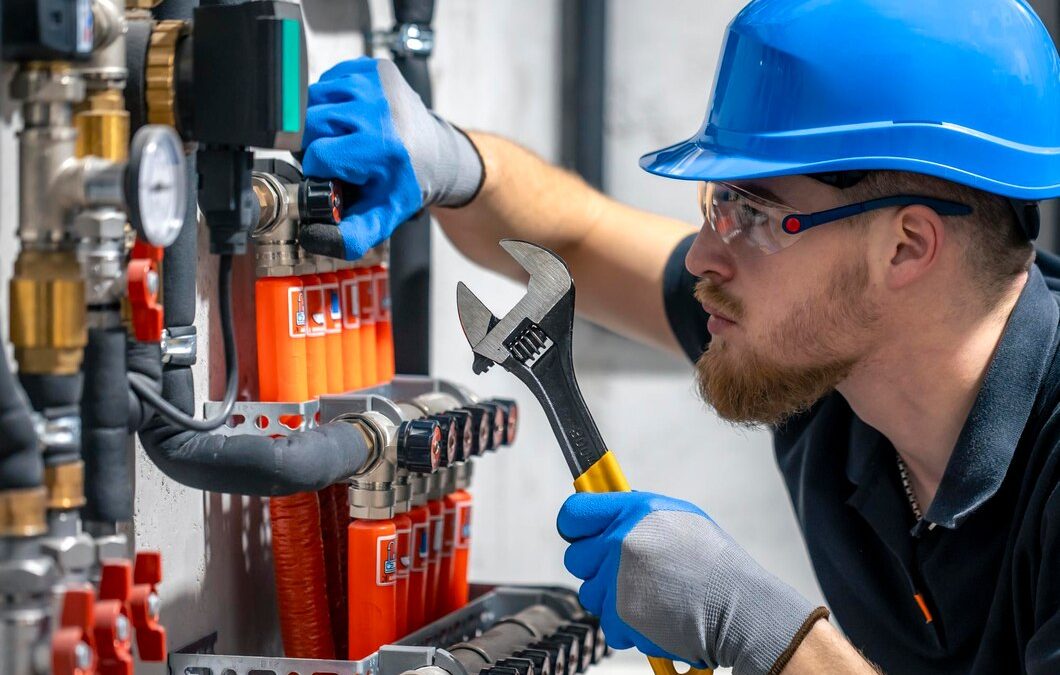In today’s business landscape, the efficient management of resources is not just an option but a necessity. Water, as a crucial resource, requires strategic handling, especially within commercial setups where excessive usage can lead to substantial utility costs and environmental impact. At Plumb Krazy Plumbing, we understand the importance of sustainability and are equipped to help businesses streamline their water consumption in effective ways.
Every year, countless businesses face the challenge of high water bills, unaware that solutions to manage this are within their reach. Initiatives to reduce water usage can serve dual purposes: lowering operating costs and contributing to environmental conservation. These measures are not only beneficial from an economic standpoint but also enhance the reputation of businesses as responsible environmental stewards.
Adopting practical and smart water management strategies is pivotal for any business looking to optimize its operations. Through this article, we’ll explore a range of methodologies from evaluating current water use to implementing advanced water-efficient technologies. These targeted strategies aim to help businesses reduce their water footprint while maintaining optimal operational efficiency.
Evaluating Your Current Water Usage
The first crucial step in reducing your business’s water usage is to comprehensively evaluate your current water consumption. We start by conducting a thorough audit of all water-using equipment and systems within your premises. This process involves checking water meters during non-operational hours to detect possible leaks and assessing the flow rates of faucets, toilets, and other fixtures. Understanding where and how water is used provides a clear picture that helps identify areas for potential savings.
Furthermore, we analyze your past water bills over several months to pinpoint usage trends. This analysis can reveal surprising patterns of high consumption and help prioritize areas for immediate intervention. By establishing a baseline of current water use, businesses can set realistic conservation goals and measure progress against concrete data. This data-driven approach ensures that our efforts are targeted and effective, providing a solid foundation for upcoming water-saving initiatives.
Installing Water-Efficient Fixtures and Appliances
One of the most impactful actions a business can take to reduce water usage is to install water-efficient fixtures and appliances. Modern advancements in plumbing technology offer a wide range of products designed for water efficiency without compromising performance. Low-flow toilets, sensor-based faucets, and efficient urinals can significantly reduce water usage in restrooms, which are often the largest consumers of water in commercial buildings.
In addition to restroom fixtures, we recommend upgrading to water-efficient models of dishwashers, ice machines, and heating systems. These appliances are engineered to use water more judiciously while maintaining or improving their operational efficiency. Implementing these upgrades not only lowers water consumption but also reduces the overall energy costs, as less energy is needed to heat and pump water. By choosing the right fixtures and appliances, businesses can achieve substantial water savings and contribute to broader environmental sustainability goals.
Adopting Water-Saving Practices for Daily Operations
Integrating water-saving practices into daily operations can profoundly influence your business’s overall water consumption. We encourage training employees on the importance of water conservation, which includes simple actions such as turning off taps when not in use and reporting leaks immediately. Promoting a culture of water consciousness in the workplace ensures that every team member contributes to the effort of reducing waste.
Additionally, we help businesses implement process modifications that conserve water, like reusing rinse water in industrial processes and optimizing cooling systems to minimize unnecessary water use. These operational changes, while sometimes small, add up to significant savings over time. By adopting these practices, businesses not only decrease their water usage but also enhance their operational efficiency and reduce operational costs.
Regular Maintenance and Monitoring for Leak Detection
Regular maintenance and proactive monitoring are essential to sustain reduced water usage. Our routine checks involve inspecting pipes, fittings, and water systems for signs of wear and potential leaks. Early detection through regular inspections can prevent large-scale water waste, which is often undetected until it becomes a major issue, leading to costly repairs and high water bills.
We also recommend installing automated leak detection systems that monitor water flow continuously and alert you to anomalies that could indicate leaks. Such systems are invaluable for maintaining water efficiency and ensuring that any issue is addressed before it escalates. Consistent maintenance and vigilant monitoring play vital roles in a comprehensive water management strategy, ensuring that your plumbing systems operate at their best and support your business’s water conservation goals.
Conclusion
Effective water management is essential for every business seeking to reduce operational costs and support environmental sustainability. By evaluating current water usage, installing efficient fixtures, adopting water-saving practices, and ensuring regular maintenance, your business can achieve substantial water savings. These strategies not only lessen your environmental impact but also enhance your company’s efficiency and reduce utility expenses.
At Plumb Krazy Plumbing, we are committed to helping businesses like yours implement sustainable and effective water usage strategies. Our expertise and tailored services ensure that your plumbing infrastructure supports your water conservation goals effectively. Contact us today, and let us assist you in optimizing your water management practices with commercial plumbing services.

